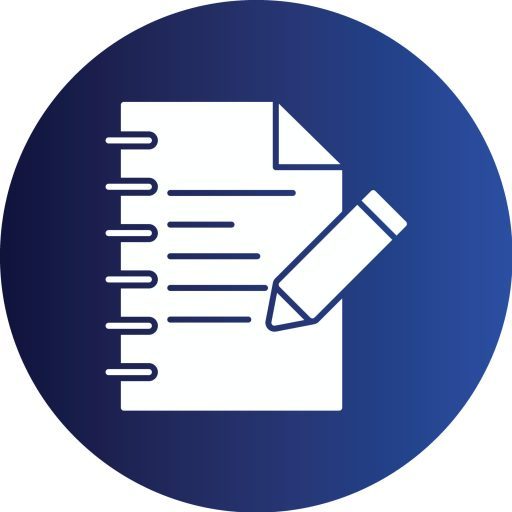Week 3: Special Education Course
Please read the directions carefully as this is a two-part assignment. For the first part you must create an interview the school district for reference is in Miami-Dade County.
PART 1
Educators should be able to identify specific learning and behavioral characteristics for students with moderate to severe disabilities to support program planning and interventions in current and future settings. They can consider how the environment, language, culture, family background, and technology influence the learning and behavioral characteristics of individuals with moderate to severe disabilities while collaboratively working with other team members on IEP planning and implementation.
In person, or via phone or internet-based communication such as FaceTime, Zoom, or Skype but not email, interview two individuals from the following list: a paraprofessional, a general education teacher, a special education staff member, including a special education teacher, director, or administrator, regarding their roles in planning and implementing components of an IEP for students with moderate to severe disabilities who are transitioning into high school, currently in high school, or working in a supportive employment post-secondary setting. Take notes, as these interviews will be submitted as part of the assignment deliverable.
The interviews should use the following questions to guide conversation:
· How do you collaborate with students and parents/guardians to ensure person-centered planning strategies around the development of the present level summary?,
· What strategies do you use when collaborating with general educators and others in selecting the best environment for the student to move towards their post-secondary transition goals and future settings?,
· How do you work cooperatively with general educators to create safe, inclusive, culturally responsive learning environments that engage individuals with disabilities in meaningful learning activities and social interactions?,
· What are some examples of developmentally appropriate assessments administered to the student by a parent/guardian?,
· How does the data gathered from these assessments guide planning and implementation decisions in addressing the unique learning and behavioral needs of individuals (Grades 9-Adult) with moderate to severe disabilities?
· How individual differences, abilities, interests, learning environments, and cultural and linguistic factors influenced the selection, development, and adaptation of learning experiences for individuals with disabilities?
· Why are the goals of self-determination (choice-making, self-cueing, and self-management) important to the long-term success for students?
· What direct modeling and coaching supports should be considered for effectively implementing social skills and daily living skills in a school or post-secondary setting?
· How do you work collaboratively with other team members when planning and implementing an IEP to consider how the environment, language, culture, family background, and technology?
· How does your assessment consider the learning and behavioral characteristics of individuals with moderate to severe disabilities?
In 500-750 words, summarize the responses you received for each question and interview. Reflect on why it is important to identify the best environments to enhance learning and behavior outcomes for individuals with disabilities. Explain how you will use your findings related to the role of the special education teacher in your future professional practice.
Support your summary with at least two scholarly resources.
Submit your interview notes and reflection to the learning management system.

Part 2
As educators, it is important to remember that parents/guardians may not have prior knowledge about learning disabilities, their risk factors, or early intervention strategies for exceptionalities in children of various ages. Additionally, parents/guardians may not understand how specific learning disabilities affect students in educational settings as well as everyday life. As educators, we can communicate and collaborate with parents/guardians to provide information and resources that help them understand learning disabilities, define the roles of the state, school, and the parents/guardians in accessing and providing intervention services, and navigate the acquisition of information and support agencies and services provided to students with disabilities.
Consider students in the grade level (K-3, 4-8, or 9-Adult) that is the focus of your field of study. Select a specific moderate to severe disability category (intellectual disability, specific learning disability, emotional behavior disorders, autism spectrum disorder, traumatic brain injury, or orthopedic impairment).
Create a 250-500 word digital brochure that could be given to families that provides information about services and supports for individuals with disabilities. The brochure should include the following:
· Short rationale explaining how you will use the brochure to communicate with parents/guardians and establish mutual expectations to help you work collaboratively to support child development and achievement.
· Short definition and explanation of the disability category including the developmental and individual differences typically associated with the disability category.
· Three developmentally appropriate, specially designed instructional strategies that can be used to address the educational needs of students with this disability.
· Three ways communication/collaboration will occur with general educators, support staff, or service providers to create a safe, inclusive, culturally responsive learning environment that includes meaningful learning activities and social interactions for all students.
· Three intervention strategies families can implement at home to promote communication skills, social skills, and literacy skills in their children affected by the chosen disability category.
· Recommend local organizations families could use to learn more about the disability and community services that might be available to them. Provide contact information for the organizations and services.
Support the assignment with a minimum of three scholarly resources.
The post Special Education Course appeared first on Assignment Help Central.

